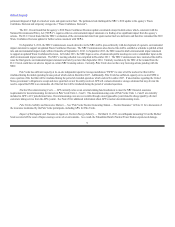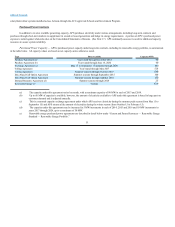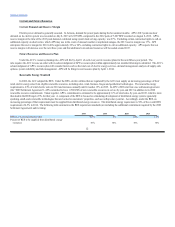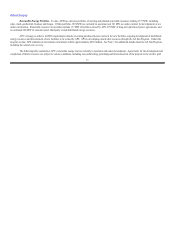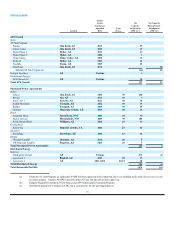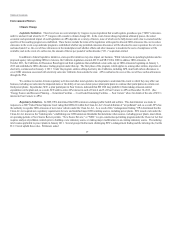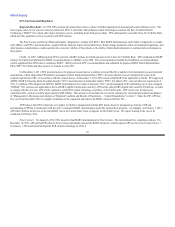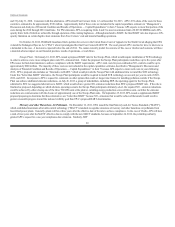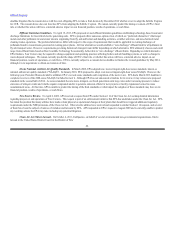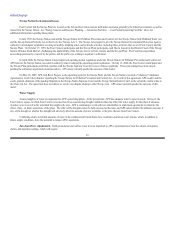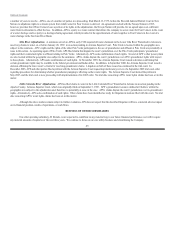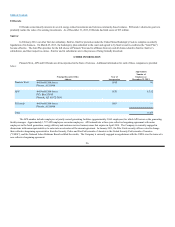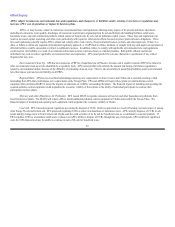APS 2013 Annual Report Download - page 22
Download and view the complete annual report
Please find page 22 of the 2013 APS annual report below. You can navigate through the pages in the report by either clicking on the pages listed below, or by using the keyword search tool below to find specific information within the annual report.
Table of Contents
EPA Environmental Regulation
Regional Haze Rules. In 1999, EPA announced regional haze rules to reduce visibility impairment in national parks and wilderness areas. The
rules require states (or, for sources located on tribal land, EPA) to determine what pollution control technologies constitute the Best Available Retrofit
Technology (“BART”) for certain older major stationary sources, including fossil-fired power plants. EPA subsequently issued the Clean Air Visibility Rule,
which provides guidelines on how to perform a BART analysis.
The Four Corners and Navajo Plant participants’ obligations to comply with EPA’s final BART determinations (and Cholla’s obligations to comply
with ADEQ’s and EPA’s determinations), coupled with the financial impact of potential future climate change legislation, other environmental regulations, and
other business considerations, could jeopardize the economic viability of these plants or the ability of individual participants to continue their participation in
these plants.
Cholla. In 2007, ADEQ required APS to perform a BART analysis for Cholla pursuant to the Clean Air Visibility Rule. APS completed the BART
analysis for Cholla and submitted its BART recommendations to ADEQ in early 2008. The recommendations include the installation of certain pollution
control equipment that APS believes constitutes BART. ADEQ reviewed APS’s recommendations and submitted its proposed BART State Implementation
Plan (“SIP”) for Cholla and other sources in Arizona in early 2011.
On December 2, 2011, EPA provided notice of a proposed consent decree to address a lawsuit filed by a number of environmental non-governmental
organizations, which alleged that EPA failed to promulgate Federal Implementation Plans (“FIPs”) for states that have not yet submitted all or part of the
required regional haze SIPs. In accordance with the consent decree, on December 5, 2012, EPA issued a final BART rule applicable to Cholla. EPA approved
ADEQ’s BART emissions limits for sulfur dioxide (“SO ”) and emissions of particulate matter (“PM”), but added a SO removal efficiency requirement of
95%. In addition, EPA disapproved ADEQ’s BART determinations for oxides of nitrogen (“NO ”) and promulgated a FIP establishing a new, more stringent
“bubbled” NO emission rate applicable to the two BART-eligible Cholla units owned by APS and the other BART-eligible unit owned by PacifiCorp. In order
to comply with this new rate, APS will be required to install SCR control technology on all three of the Cholla units. APS’s total costs for these post-
combustion NO controls would be approximately $200 million. This amount is not included in our current estimates for environmental capital expenditures
in “Management’s Discussion and Analysis of Financial Condition and Results of Operations — Capital Expenditures” in Item 7. Under the FIP, APS has
five years from December 2012 to complete installation of the equipment and achieve the BART emission limit for NO .
APS believes that EPA’s final rule as it applies to Cholla is unsupported and that EPA had no basis for disapproving Arizona’s SIP and
promulgating a FIP that is inconsistent with the state’s considered BART determinations under the regional haze program. Accordingly, on February 1, 2013,
APS filed a Petition for Review of the final BART rule in the United States Court of Appeals for the Ninth Circuit. We expect briefing in the case to be
completed in February 2014.
Four Corners. On August 6, 2012, EPA issued its final BART determination for Four Corners. The rule included two compliance options. On
December 30, 2013, APS notified EPA that the Four Corners participants selected the BART alternative, which required APS to retire Four Corners Units 1-3
by January 1, 2014 and install and operate SCR control technology on Units 4
19
2 2
x
x
x
x


